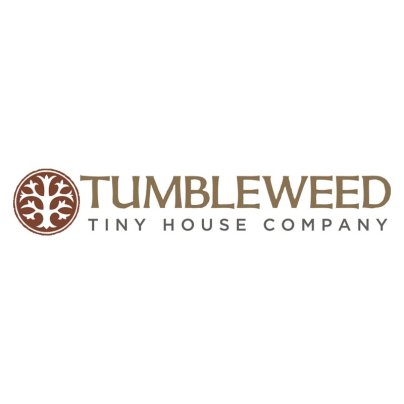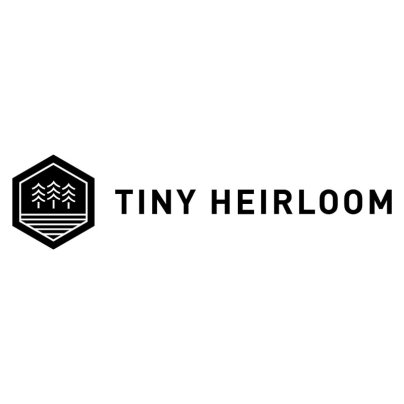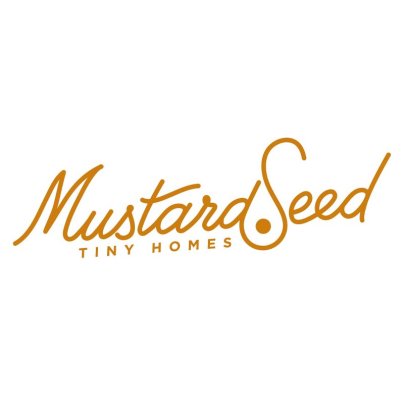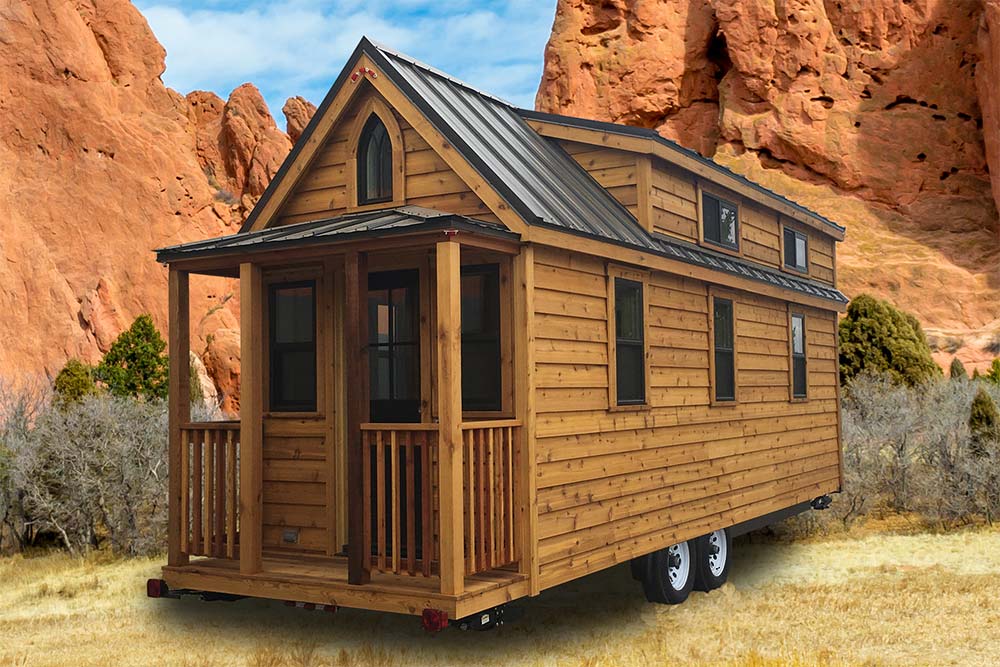
We may earn revenue from the products available on this page and participate in affiliate programs. Learn More ›
Whether it’s a personal mission toward minimalism, a vacation home in the mountains, or the start of a fledgling rental business, building one of the best tiny homes has some serious appeal. And while many DIYers may think they’re ready to build tiny homes themselves, it often makes more sense to purchase one already complete. But with so many manufacturers on the market, it can be difficult to choose the right builder. Shoppers need to know what to look for and how to choose one of the best tiny-home builders that will fit their needs, especially regarding designs and budget. The following guide will outline which builders to consider and important factors to remember when starting the process of building a tiny home.
- BEST OVERALL: Tumbleweed Tiny House Company
- BEST FOR CUSTOM TINY HOMES: Tiny Heirloom
- BEST FOR MODULAR HOMES: Mustard Seed Tiny Homes
- BEST FOR CONTAINER HOMES: Custom Container Living
- BEST FOR RV HOMES: Mint Tiny House Company
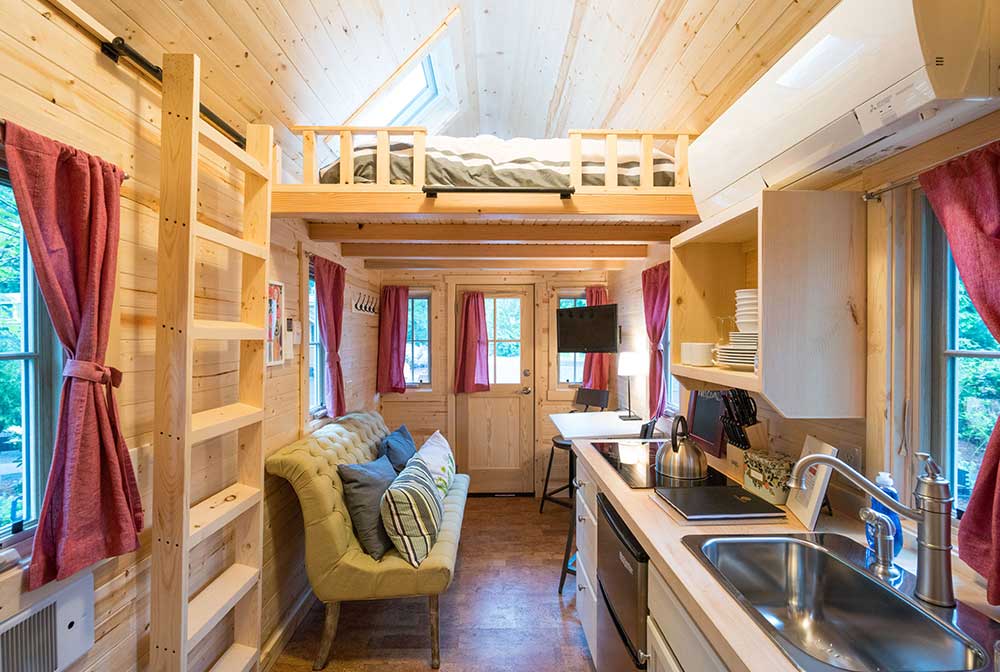
What to Consider When Choosing One of the Best Tiny- Home Builders
While small, the best tiny houses are still large purchases. Future tiny-home buyers will want to do their research before landing on one builder or another. Here are some of the most important considerations to keep in mind when choosing a company to construct a tiny home.
Shipping Area
When someone purchases a tiny home, it will typically arrive to the home buyer finished, including the interior, exterior, and frame—all the homeowner has to do is provide a site on which to place the house, possibly in a tiny-home community. However, that site must be within the tiny-home builder’s shipping area, so shoppers will want to check this information before committing to a builder. Luckily, there are plenty of options for where to buy tiny homes to cater to every corner of the country. Also, many sit on tiny-home trailers, which means that even if the home buyer’s site is beyond the builder’s territory, the company or customer can hire a delivery service to pick up the home and tow it to its final destination, just like an RV. But customers will want to keep in mind that tiny homes are often much heavier than an RV, so this haul could require a heavy-duty truck (and incur a high price tag).
Price Range
How much does it cost to build a tiny home? It’s a critical point to consider when choosing a tiny-home builder, as the structure has to fit the shopper’s budget. Going all out and purchasing a tiny home that isn’t affordable can send a person into a financial crisis. Shoppers can expect to pay anywhere from $30,000 to $130,000 for a finished product from a tiny-home builder. While this might seem like a wide price range, these models will vary in finish and size, allowing shoppers to shop for a model that will work for their needs regarding budget and design.
Types of Tiny Houses
While the designs and features vary tremendously, there are essentially three core types of tiny homes: THOW, park-ready, and THOF.
- THOWs, or tiny homes on wheels, are essentially large, heavy RVs. They’re built directly onto a frame with wheels. This makes the best tiny houses on wheels easy to tow and move whenever the homeowner wants.
- Park-ready tiny homes are delivered on frames but are meant to be more permanent than THOWs, meaning they’re better suited for RV or mobile home parks. They’re also typically heavier than THOWs, making them more challenging to tow. However, it is possible to move them when necessary.
- THOFs, or tiny homes on foundations, are built on permanent foundations, whether those be piers, block walls, or something similar. They’re unable to move, but the conditions underneath the tiny home are much easier to control and can help the tiny home last longer. THOFs aren’t as common as THOWs or park-ready models, so customers who are committed to putting a tiny home on a foundation will want to look for companies that manufacture THOFs.
Custom vs. Production Houses
Tiny-home shoppers can buy a production-built or prefab tiny home based on existing designs and plans or a custom-built home based on plans drawn up with the builder. Prefabricated homes for sale are typically faster to purchase and a bit less expensive than tiny custom-built homes, but the custom models can give the shopper everything they need from the start.
Also, some manufacturers offer a choice between turnkey, move-in-ready tiny homes and shells. The turnkey home is ready to go the day it lands on the site, while the shell will have a finished exterior but a blank slate for the interior. Purchasing a shell can be a good option for homeowners who want to put some DIY work into their tiny homes. To go even more DIY, some manufacturers offer tiny-home kits that shoppers can put together independently.
Customization Options
Tiny-home customization is tricky. When the homeowner of a traditional-size house needs a bit more space, they can typically build an addition, rearrange the home’s layout, or go several other routes to provide more comfortable living conditions. In a tiny home, these customizations must occur early in the design process. Tiny-house builders that allow customizations will work with the shopper to tweak the design. They may also allow the shopper to add items, rearrange interiors, or change the overall size and height of the tiny home. For tiny-home shoppers with specific needs, this aspect could be critical to finding a good builder. However, not all tiny-home builders allow for structural customization—some builders may only allow home buyers to make aesthetic changes, such as the flooring or exterior color. Home buyers can determine what customizations are available when getting a quote.
On-Grid vs. Off-Grid Living
Living on-grid or off-grid each has its specific requirements, and homeowners will want to decide on which they prefer before shopping. On-grid living means hooking the tiny home up to electric, water, and plumbing. Off-grid living is more self-sufficient and requires water tanks, solar panels, and waste tanks. On-grid living is more common with THOFs and park-ready homes, while off-grid living is more popular with THOWs that are designed to move from place to place.
Suppose a home buyer wants to live off-grid. Rather than retrofitting an on-grid tiny home for off-grid living, a home buyer can search for a builder that offers off-grid tiny-home models with the requisite utilities like battery storage, a larger water tank under a bed, or a special composting apparatus.
Construction Time
Tiny homes have become increasingly popular over the past few years. As a result, some tiny- home builders work overtime to keep stock, while others build their models one piece at a time. Knowing how long it’ll take to construct a tiny home matters.
Customizations will typically mean a longer construction process. The builder has to source certain materials, adapt the design and plans, and then build the home. But home builders that stick to standard tiny-home plans may be able to keep certain models in stock, allowing the shopper to get their home much sooner.
It’s important to realize that shipping a tiny home cross-country will take time. These are big, heavy, bulky items, and they sometimes require special transport licenses. If time is of the essence, shoppers may want to look for a production builder nearby.
Warranties
Even permanent luxury homes built by the best home construction companies can have issues. And, though smaller, tiny homes are an investment. As such, owners of tiny homes may appreciate a warranty on the home or the mechanical systems that keep the lights on or keep them comfortable (and clean!).
In general, most tiny-home builders offer warranties for up to 1 year on structural items and mechanical items. This includes the framing and exterior of the building as well as the plumbing, heating, and electrical systems. Beyond that year, any repairs that come up will be on the homeowner, so it’s essential to know when the warranty starts and ends. Shoppers will want to note that many of the best home makers do offer longer warranties (up to 10 years in some cases). While these are additional purchases, they may be worth the extra expense.
Our Top Picks
While the factors to consider provided a lot of information, the process of choosing a builder can still feel overwhelming. The following list of the best tiny-house builders should help, as there is a builder here for just about any home or budget.
Best Overall
Tumbleweed Tiny House Company
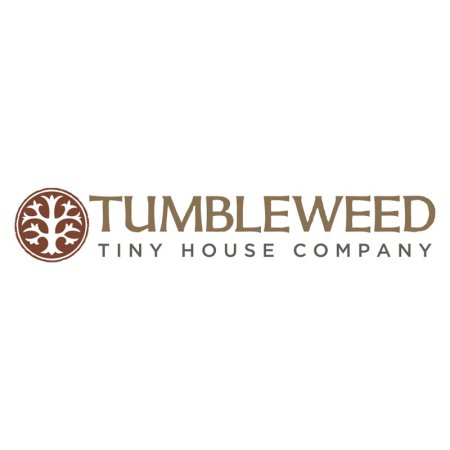
Pros
Cons
Specs
- Shipping area: Contiguous U.S.; overseas shipping available
- Price range: Starting at $84,959 to $96,959
- Types of tiny houses: THOW, park-ready
- Custom vs. production houses: Custom, production
- Construction time: Not specified
- Warranties: 1 year on plumbing, electrical, roofing, windows, and doors
Why It Made the Cut: With its wide range of styles, interactive online design feature, and high-quality virtual tours, Tumbleweed Tiny House Company makes shopping for a tiny home easy and enjoyable. Tiny-home shoppers looking for an enjoyable, effective shopping experience coupled with plenty of options will want to check out Tumbleweed Tiny House Company. Tumbleweed has a range of tiny-home styles to choose from, including modern, contemporary, and traditional designs. The company also specializes in custom and production homes in both THOW and park-ready models. Tumbleweed has plenty to offer shoppers to streamline the buying process. First, the in-depth 3D tours allow shoppers to picture themselves in nearly every space within a model. Also, the interactive online design guide and quote features give shoppers an estimate of what their model might cost before they even speak to a company representative. There is also special pricing for military members, teachers, and first responders. Tumbleweed’s homes are limited to 26- and 30-foot models, but eco-friendly shoppers will be happy to know that Tumbleweed is Certified Green by TRA, which shows dedication to responsible building and energy efficiency.
Best for Custom Tiny Homes
Tiny Heirloom
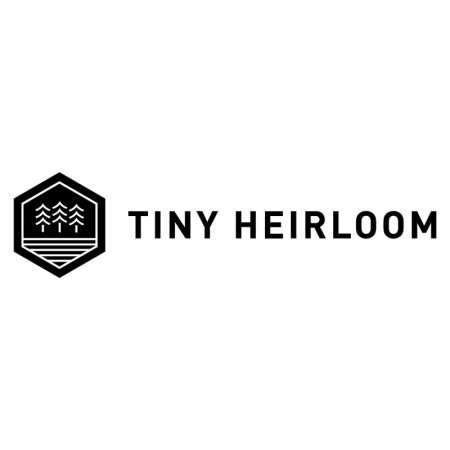
Pros
Cons
Specs
- Shipping area: Contiguous U.S.; overseas shipping available
- Price range: Starting at $64,900 to $144,900
- Types of tiny houses: THOW, park-ready
- Custom vs. production houses: Custom, production
- Construction time: Not specified
- Warranties: 1 year on structure, labor, materials, and mechanical defects
Why It Made the Cut:
Tiny-home owners who want a unique abode will appreciate Tiny Heirloom’s collaborative, from-scratch design process, and frequent updates throughout the building process.
Folks who want a truly custom tiny home might consider going with Tiny Heirloom. This tiny- home builder provides its customers with absolutely custom designs that start with a blank sheet rather than a base template. Tiny Heirloom customers will go through a thorough and collaborative one-on-one design process that ensures the customer is getting the home they envision (though home buyers will want to note that these homes do come at a premium price).
Customers who aren’t exactly sure of what they want are welcome as well. Tiny Heirloom offers production tiny homes, including park-ready and THOW models. The company also provides shoppers with a 29-page PDF of frequently asked questions and a tiny-home ownership guide to help prospective homeowners feel a bit more comfortable about their purchase.
Best for Modular Homes
Mustard Seed Tiny Homes
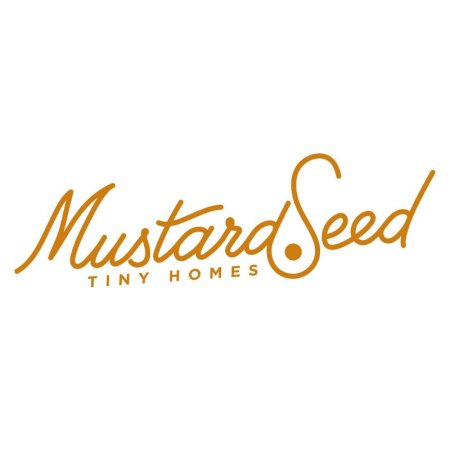
Pros
Cons
Specs
- Shipping area: Third-party delivery available outside of greater Atlanta area
- Price range: Starting at $74,000 to $160,000
- Types of tiny houses: THOW, park-ready, and THOF
- Custom vs. production houses: Production with customizations
- Construction time: 4 to 5 weeks for planning and consultation; 8 to 10 weeks for construction
- Warranties: Not specified
Why It Made the Cut:
Mustard Seed Tiny Homes offers a variety of THOWs, park-ready, and THOF models in styles to suit any home buyer’s preferences.
Shoppers stuck between purchasing a small modular or a tiny home will want to consider Mustard Seed Tiny Homes. This tiny-home builder offers THOWs, park-ready, and THOF models, the latter of which can drop onto a foundation for a permanent home—something many manufacturers don’t offer.
Mustard Seed Tiny Homes offers a range of styles, including modern, contemporary, and traditional, giving shoppers plenty of options to choose from. While the prices can be relatively high, Mustard Seed does allow for customizations, allowing users to find and design a model to fit their needs. And, should the homeowner want to save some money and get their hands dirty, Mustard Seed Tiny Homes sells tiny-home shells ready for custom finishing.
Best for Container Homes
Custom Container Living

Pros
Cons
Specs
- Shipping area: Contiguous U.S.
- Price range: Starting at $29,000 to $100,000
- Types of tiny houses: THOF
- Custom vs. production houses: Production with customizations
- Construction time: 8 to 12 weeks
- Warranties: Not specified
Why It Made the Cut:
Tiny-home shoppers committed to environmentally sound choices will appreciate Custom Container Living’s model of upcycling shipping containers into beautiful tiny homes.
Tiny homes tend to attract eco-conscious owners, so a company that upcycles shipping containers into humble abodes might be a good starting place for shoppers. Custom Container Living is such a company, breathing new life into lightly used shipping containers by turning them into efficient, well-designed tiny homes.
Custom Container Living offers several floor plans made from one, two, three, or four containers. It also has a practical, interactive online design and quote feature to give shoppers a bit of insight into what they’ll be paying. While exterior styling is somewhat limited, the eco-friendly construction materials these tiny homes are made from should offset any design complaints for most folks. And one interesting point (and possible advantage) to going with a Custom Container Living home is that the company does not require a foundation. Instead, customers can place their container tiny home directly on level ground.
Best for RV Homes
Mint Tiny House Company

Pros
Cons
Specs
- Shipping area: Contiguous U.S. and Canada
- Price range: $99,801 to $133,709
- Types of tiny houses: THOW, park-ready
- Custom vs. production houses: Production with customizations
- Construction time: 8 weeks
- Warranties: 1 year on structure and materials
Why It Made the Cut:
Mint Tiny House Company offers several base RV-style tiny homes with upgradable touches, giving homeowners lots of options for a tiny space.
Tiny-home shoppers looking for a THOW or park-ready home will want to consider Mint Tiny House Company. This manufacturer offers several base models of RV-style tiny homes to start with, and each model has optional design touches to make it stand out. And each model is available in several sizes, allowing shoppers to choose the model they truly like the most, not the one that simply fits their needs.
Mint Tiny House Company has several unique designs that maximize space and customer satisfaction. One model has a gooseneck hitch that allows for a full-size bed at the front of the tiny home, and another model has a double-pitched roof over the loft to maximize headspace. The range of park-ready models is somewhat limited, and these RV-style models might not do very well in cold climates (they’re only R21 insulated, which is only suitable for warmer regions). But the special space-saving features and range of designs are ones to check out for those in the market for an RV home.
Our Verdict
For shoppers looking for the best overall tiny-home builder, Tumbleweed Tiny House Company might fit the bill, considering the company’s wide range of styles; high-quality 3D tours; and practical, interactive design. For those who prefer something custom, Tiny Heirloom offers completely unique designs that start from scratch, allowing its homes to stand out in a crowd of tiny houses.
How We Chose the Best Tiny-Home Builders
While the homes may be small, choosing a list of the best tiny-home manufacturers was no small task. We had to draw upon all of our construction experience and research what other shoppers needed from their tiny-home builders before we could even begin to think about builders.
With the baseline of the most important features established, we performed extensive product research to compile a pool of potential candidates. We then compared the manufacturers and the products they offered. Builders that could not meet our standards of offerings and transparency did not make the cut. The options that remained were given awards based on their strengths.
Before You Buy From One of the Best Tiny-Home Builders
There are lots of things to consider before buying a tiny home. For one, there can be local code restrictions for homes built on foundations. Tiny homes on foundations typically require permits, and permits for permanent homes may require minimum square footage or setbacks from other buildings. THOWs aren’t nearly as permanent, so some jurisdictions are a bit more lenient with these types of tiny homes.
Also, since a tiny home is a large purchase, shoppers will want to have a plan to pay for their homes. Many folks sell their current homes and pay cash for their tiny homes out of the proceeds. Others choose to take out one of the best home equity loans or borrow from one of the best HELOC lenders. Mortgages can be a bit more difficult to secure due to the non-permanent nature of a tiny home. Some manufacturers do offer their own financing, but it’s usually at a higher interest rate than a shopper might get from a third-party lender.
Cost of Buying From One of the Best Tiny-Home Builders
Tiny-home costs vary, but shoppers can expect to pay between $30,000 and $60,000 or more. Where in this range a tiny-home’s price falls depends on customizations, materials, and size. Shoppers looking to come out on the lower end of the price range may be more limited to entry-level materials like vinyl flooring, laminate counters, and basic appliances. Those who’d prefer an upgraded tiny home will pay more, but they may be able to choose from exotic hardwood flooring, stone countertops, and luxury appliances.
Also, outfitting a tiny home for on-grid or off-grid living can play a huge role in the price. Self-contained tiny homes with solar panels, power banks, and tanks for sewage and fresh water will cost considerably more than models that plug into the grid.
The Advantages of Buying From One of the Best Tiny- Home Builders
Tiny-home builders typically offer their structures with warranties. If only for a year, these warranties protect the home against structural and mechanical defects.
Customizations are tricky. Working in such a limited footprint requires specific designs and plans to allow for storage and comfort. The best tiny-home builders know how these customizations work and how to make them happen when they can. These builders will also tell customers when some features aren’t feasible and make a plan on how to compromise.
Building tiny homes takes more than just construction experience. These homes need to be safe enough for highway transport, which means special hardware, tools, and techniques to connect them to the frames underneath. This is an area where the best tiny-home builders shine, as they know how to connect these structures to the frame securely.
- Many of the best tiny-home builders offer extended warranties.
- Pulling off custom floor plans requires experience and know-how that the best builders have.
- The best tiny-home builders know exactly how to attach the structure to the frame securely.
FAQs
Even with all of that background on the best tiny-home builders, home buyers could still have some questions. The following are some of the most frequently asked questions about tiny-home builders and the structures they create.
Q. What is the largest tiny home you can build?
“Tiny home” isn’t necessarily a standardized term—however, when it comes to the act of towing a small structure, these homes must be less than 13.5 feet tall and 8.5 feet wide. Tiny homes built on foundations don’t have the same size regulations.
Q. What is the best state to build a tiny house?
The best states in which to build a tiny home are California, Oregon, Texas, North Carolina, and Florida. These states are relatively lax on tiny-home construction, allowing customers the freedom they need to go small.
Q. What are the disadvantages of a tiny house?
The biggest disadvantage of a tiny home is the lack of space for storage and people. However, the best tiny-home builders have smart ways to build storage into their structures, and efficient use of specific types of furniture can help.
Q. What are the pros of living in a tiny home?
Generally speaking, living in a tiny home is more affordable than a larger home. Tiny homes are typically less expensive to purchase, and heating and cooling such small spaces requires less draw on utilities. Taxes based on the footprint or square footage of the home are generally less expensive as well.
Q. How long do tiny homes last?
Some experts suggest that tiny homes can last 30 to 50 years. For this to be the case, however, it requires regular roof and exterior maintenance. Tiny homes that are constantly on the move should not be expected to last as long.
Sources: Go Downsize, Never Too Tiny
